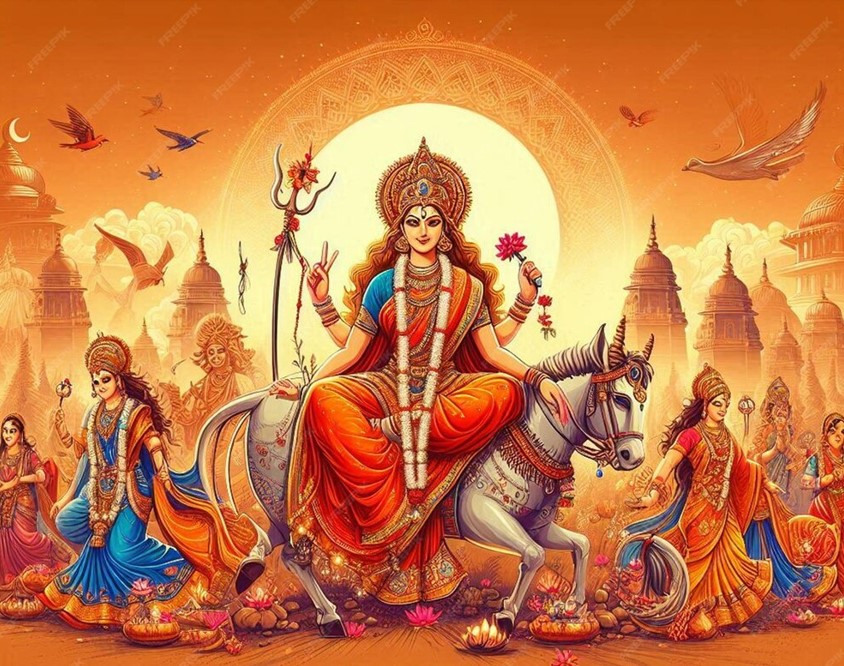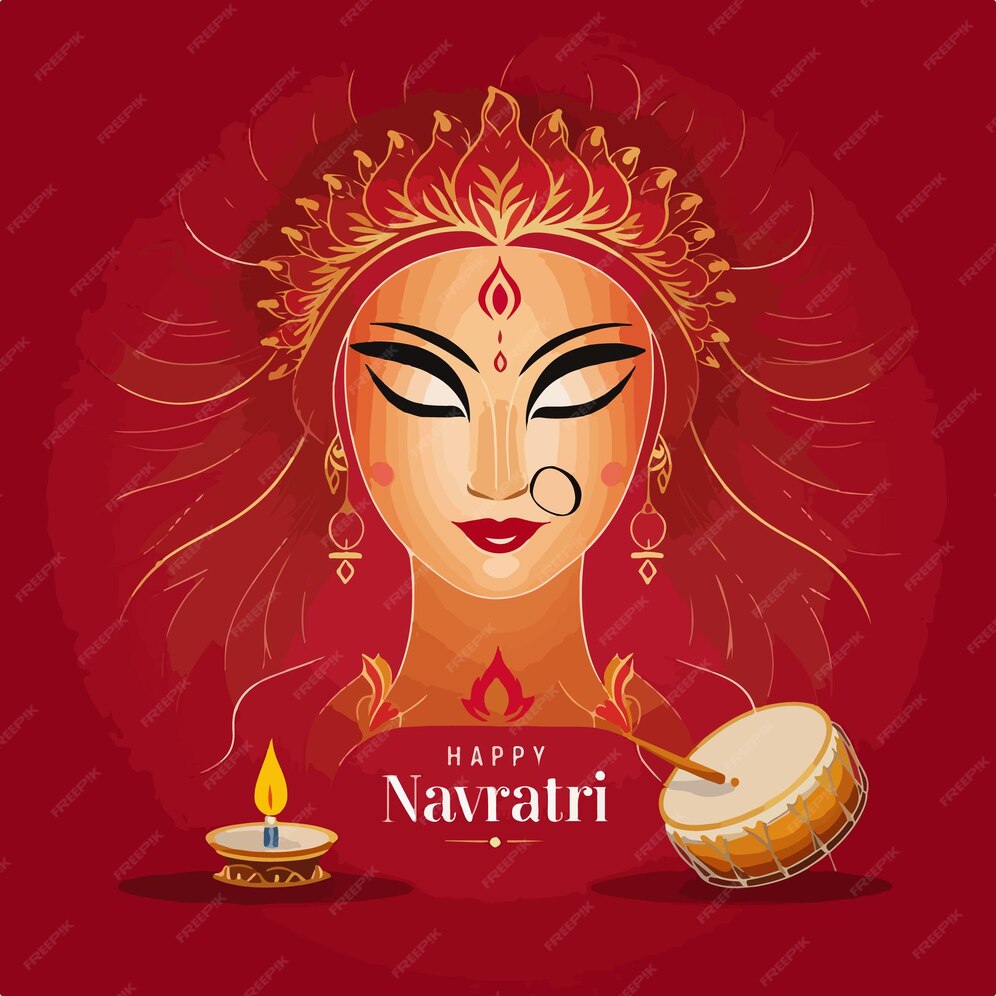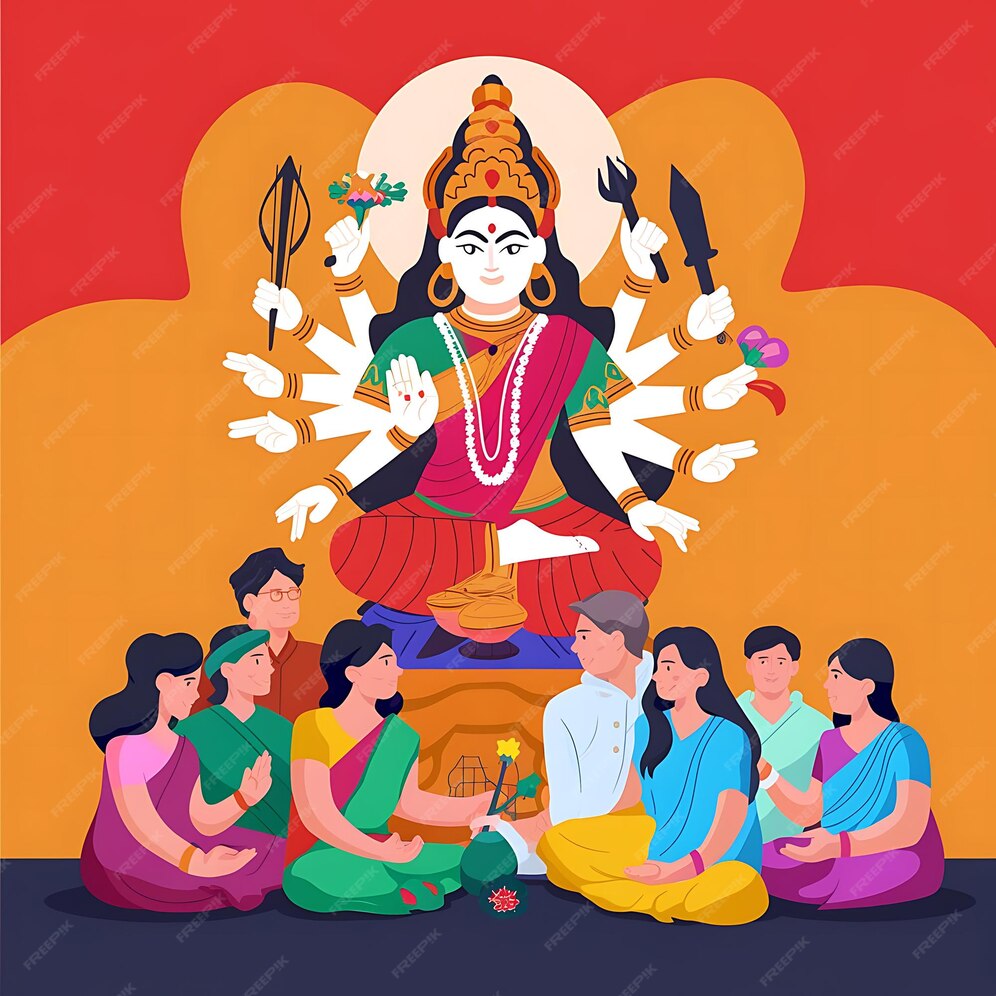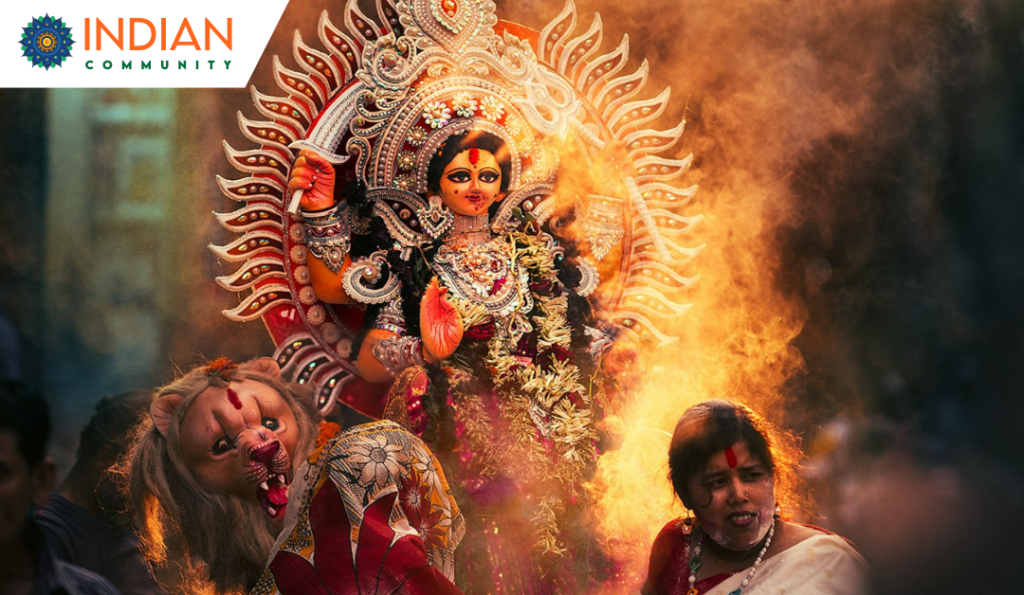Navratri, a Sanskrit word meaning “nine nights,” is a prominent Hindu festival celebrated with great enthusiasm and devotion across India and by Indian communities worldwide. This vibrant festival, which typically falls in September or October, is dedicated to the worship of the goddess Durga and her various manifestations. But why is Navratri celebrated? This blog delves into the origins, significance, and various aspects of this cultural and spiritual festivity, including the specific tithi (dates) and muhurat (auspicious timings) for this year’s celebrations.

The Essence of Navratri
Navratri is not just a festival; it’s a celebration of life, spirituality, and the triumph of good over evil. This nine-night event encompasses various rituals, prayers, and festivities that honor the divine feminine energy embodied by Goddess Durga. Each day of Navratri is dedicated to a different form of Durga, representing different aspects of life and spirituality.

Historical and Mythological Significance
The origins of Navratri are deeply rooted in Hindu mythology and historical legends. The festival primarily celebrates the victory of Goddess Durga over the demon Mahishasura, symbolizing the victory of righteousness over evil. According to the legends, Mahishasura, a demon with the power to change shapes, wreaked havoc on the heavens and earth. The gods, unable to defeat him, combined their powers to create Durga, a formidable goddess who ultimately vanquished Mahishasura.
Navratri also marks the end of the monsoon season and the beginning of the harvest season in India, aligning with the cycle of nature and agricultural prosperity.
Rituals and Customs
Navratri is observed with a series of rituals and customs, varying slightly across regions:
Navratri is observed with a series of rituals and customs, varying slightly across regions:
- Fasting and Prayers: Devotees observe fasting, which can range from complete abstinence from food to consuming specific types of food. Daily prayers and recitations of sacred texts like the Durga Saptashati are integral to the celebration.
- Puja and Offerings: Each day of Navratri is dedicated to a different manifestation of Goddess Durga. Offerings of flowers, fruits, and sweets are made, and special pujas (rituals) are conducted.
- Dandiya and Garba: In Gujarat and other parts of India, traditional dance forms like Garba and Dandiya are performed in community gatherings. These dances are not only a form of celebration but also a way to honor the goddess with vibrant movements and music.
- Nine Forms of Durga: The nine nights are dedicated to nine different forms of Durga, each representing a unique aspect of life. They are:
- Shailaputri: The daughter of the mountains, symbolizing stability and strength.
- Brahmacharini: The goddess of austerity and penance.
- Chandraghanta: The goddess of bravery and valor.
- Kushmanda: The goddess who creates the universe.
- Skandamata: The mother of Skanda, representing nurturing and motherhood.
- Katyayani: The warrior goddess, symbolizing courage.
- Kalaratri: The fierce form of Durga, representing destruction of evil.
- Mahagauri: The goddess of purity and tranquility.
- Siddhidhatri: The goddess who grants all accomplishments and desires.
Tithi and Muhurat for Navratri 2024
For the year 2024, Navratri will be celebrated from October 10th to October 19th. Here are the specific tithis (dates) and muhurats (auspicious timings) for the festival:
- Pratipada (First Day) – October 10, 2024: The festival begins with the first tithi dedicated to Goddess Shailaputri. The shubh muhurat for Ghatasthapana (installation of the kalash or sacred pot) is between 6:05 AM and 7:40 AM.
- Dwitiya (Second Day) – October 11, 2024: Dedicated to Goddess Brahmacharini, this day focuses on penance and austerity.
- Tritiya (Third Day) – October 12, 2024: This day honors Goddess Chandraghanta, symbolizing courage and bravery.
- Chaturthi (Fourth Day) – October 13, 2024: Celebrates Goddess Kushmanda, the creator of the universe.
- Panchami (Fifth Day) – October 14, 2024: Devoted to Goddess Skandamata, representing motherhood and nurturing.
- Shashthi (Sixth Day) – October 15, 2024: This day is dedicated to Goddess Katyayani, the warrior goddess.
- Saptami (Seventh Day) – October 16, 2024: Celebrates Goddess Kalaratri, who represents the destruction of evil.
- Ashtami (Eighth Day) – October 17, 2024: Devoted to Goddess Mahagauri, symbolizing purity and serenity.
- Navami (Ninth Day) – October 18, 2024: Honors Goddess Siddhidhatri, who grants all accomplishments.
- Vijaya Dashami (Dussehra) – October 19, 2024: The festival concludes with Dussehra, celebrating the victory of Lord Rama over Ravana, and symbolizes the triumph of good over evil.
Regional Variations and Celebrations
Navratri is celebrated differently across India:
- In Northern India, the festival culminates in Dussehra, which celebrates the victory of Lord Rama over the demon king Ravana.
- In Gujarat, Navratri is marked by vibrant dance performances and community gatherings.
- In West Bengal, Durga Puja, a major celebration during Navratri, is a grand affair with elaborate decorations and artistic depictions of Goddess Durga.

Cultural and Social Impact
Navratri is more than just a religious festival; it has a significant cultural and social impact. It fosters community spirit, brings together people from various walks of life, and promotes cultural heritage through traditional dance, music, and art. The festival also serves as a reminder of the values of devotion, strength, and righteousness.
Navratri is a festival that beautifully intertwines mythology, spirituality, and cultural traditions. Its celebration signifies the triumph of good over evil and honors the divine feminine energy. Through rituals, dances, and communal gatherings, Navratri unites people in a shared celebration of life, faith, and community spirit. Whether you are a devout participant or simply an observer, Navratri offers a profound insight into the rich tapestry of Hindu culture and tradition.By understanding the deeper significance of Navratri, one can appreciate the festival’s role in promoting spiritual growth and communal harmony. As the vibrant colors of Navratri paint the skies and hearts of millions, the festival continues to inspire and uplift, echoing the timeless message of hope and victory.

